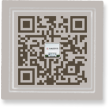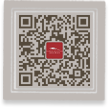- 中文
- EN
- Français
- 日本語
- 한국어
- 繁體中文
The Ancient Peru Civilization Exhibition launched in the Hunan Museum
The Hunan Museum, in collaboration with the Shanxi Museum, the Tianjin Museum, the Chongqing Three Gorges Museum, the Guangdong Museum, the Capital Museum and Shanghai Youxiang Culture Co., holds the special exhibition, “Ancient Peru Civilization: Exploring the Origin of the Inca Empire". The exhibition kicked off on the evening of September 25, 2020 at the Art Hall of the Hunan Museum.
The Ambassador of Peru to China, relevant leaders of the Provincial Cultural Heritage Bureau, leaders of more than 10 domestic cultural and artistic institutions, experts, museum directors, senior members, and media representatives were invited to attend director of the Hunan Museum, Chen Yuanping, deputy director of Hunan Provincial Department of Culture and Tourism and director of Provincial Bureau of Cultural Heritage, and Luis Quesada, the ambassador of Peru to China, delivered speeches successively.


This exhibition featured collections from 11 prestigious Peruvian museums. It consists of 157 exhibits, most of which are representative artifacts of major archaeological discoveries, including pottery, metal, textiles, mummies, etc. The exhibits are both rich in variety and of high scientific and artistic value, making it a high-standard large-scale exhibition in China in recent years that systematically displays the ancient Peruvian civilization. The exhibition is divided into four chapters: “Emergence of the Civilization”, “Bright and Shiny Stars”, “Fighting for Supremacy”, “Towards Unity”. By displaying 14 civilizations in series, it tells the grand history of the Andes. From its first unification and its development of various regional cultures, to the establishment of a trans-regional political system, to the conquest of the entire Andean region by the Incas when a strong state was established and the empire reached it peak, and to the final destruction by the Spanish colonizers.

The first chapter focuses on the two early civilizations of Peru, the Cupisnique culture and the Chavín culture, centered around the religious origins and the development of early pottery. The architectures in this period feature a strong religious flavor. For example, the elaborately arranged stone mortises in the temples represent the whole process of how common human faces turn into feline faces and then into gods with animals faces and teeth after the priests took hallucinogens. The most distinctive pottery is a series of “stirrup-spout ceramic vessels”, which are used as utensils for rituals, burials and daily life. Their unique shapes, as a matter of fact, symbolize the philosophy of the ancient Peruvian ancestors, that is, “the oneness of the Ying and Yang, and all the other opposites”. These stirrup-spout vessels are decorated with local animals that are commonly seen, such as octopus, crabs, leopards and squirrels, as well as plants, humans and supernatural creatures. They vividly reflect that ancient Peruvian, unaffected and pure, believed that all things have their spirits and beauty, and always respected, revered and deified everything in nature, praying for their blessings.
The second chapter focuses on the "Nazca Culture" and "Moche Culture". During this period, some regional states had began to be established, which brought about further unification and development of cultures. Pottery during the Nazca civilization was the most colorful ones compared with the others. The number of pottery unearthed during this period is also the large. As we can see, 35 of the 43 exhibited “Moche Culture” artifacts are pottery. On some large faiences, there are some traces of adhesions of fragments, suggesting that they were deliberately smashed as sacrificial offerings before burial, which resembles the situation of the bronze fragments excavated in Sanxingdui, Guanghan, Sichuan. This implies the cultural commonality in funeral customs between the two civilizations, as well as the similarities shared by the civilizations of the the Pacific Rim.
The third chapter focuses on the Sican Culture. The pottery mainly featured the pattern of Sican gods. Many exquisite gold ornaments, especially the Peruvian national treasure "Gold Headdress of the Male Noble", which weighs 2 kilograms, marks the pinnacle of gold craftsmanship in South America in the pre-Spanish period. There are also 6 pairs of large gold earrings with diameters of about 10 cm, which were unearthed from the tombs of the nobles in mid-Sican, reflecting people’s special and exaggerated aesthetic tendency towards “large ears”. In addition, many gold ornaments and items exhibited in this chapter, such as “Gold Cup with Spondylus Pattern”, “Gold Cup with Toad and Sican God Pattern”, “Gold Necklace with Human and Bird Pattern” exhibited in this chapter fully express the Peruvian people’s endless admiration for gold, and serve as a reminder of the ancient and legendary "Lost Empire of Gold" that has attracted countless colonists and adventurer to seek for it.
The fourth chapter focuses on the Chancay Culture, which is featured by pottery and textiles. The pottery during this period boast cute and amusing shapes. For example, the “Huaco”(a two-colored pottery figure) , standing with his arms raised and his round bulging belly, appears to be quite honest and lovely. Some scholars even regard the Chancay Culture as the most authentic culture in Peru. The textile are carefully fabricated with varied techniques. The artisans were excelled at creating variations through different shades of colors and densities of warps and wefts. For example, on the “Brocade Tunic and Apron” in the Chimú culture, geometric patterns were neatly arranged, and a series of large, stooped figures with long hair flowing upward in an S-shaped pattern are presented. However, the meaning of these patterns remains unclear. This chapter focuses on the Inca Empire. Taking Machu Picchu, a World Heritage Site, as the setting to create better atmosphere, it intensively displays the state of the art of pottery, metalware, stone carving, and textiles developed in the Inca Empire.
"Peru”, “the Andean Civilization” and “the Inca Empire" may sound distant and unfamiliar to most visitors, but they’re also mysterious and desirable. With the intention of breaking down the barrier of cultural distance and leading the audience to "subjectively explore" the characteristics of ancient Peruvian civilization and draw analogies between ancient Peru and ancient China, the curatorial team has carefully conceived the content and design of the exhibition, researched and considered various aspects of the exhibition, so that the audience can shift from the traditional role of passive receivers to the new one of active exploration, divergence and textual studies.
Besides, the design of the Peruvian exhibition is also unique: the main colors are derived from unearthed pottery, and in the Temporary Exhibition Hall, the exhibition's IP elements are flexibly employed to create an immersive atmosphere: the famous "Puerta del Sol" in the Tiahuanaco Culture is used in the design of signboards; the Andes Mountains and embroidered priest figure standing plates are installed on both sides of the gallery, giving the audience an immersive and in-depth experience of the exhibition. Interactive installation for visitors "Portal of Time", the online service overview platform for the exhibition, ticket lucky draw, jigsaw puzzle games, exhibition hall tours and knowledge contests will also enhance the experience of the exhibition through four links: communication, experience, souvenir and participation. In addition, there will be "Peruvian Dream Factory" and other online and offline educational activities, as well as the special cultural and creative products, which will also be introduced to visitors in detail in the live stream of the exhibition.



